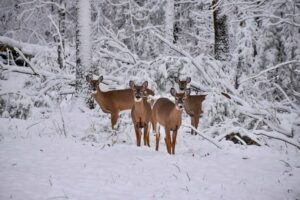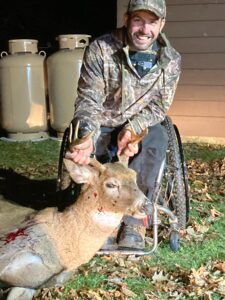The Baker-Polito Administration recently established the new Massachusetts Office of Outdoor Recreation, furthering its commitment to outdoor recreation. It is within the Executive Office of Energy and Environmental Affairs Secretariat and will work alongside state agencies, including the Department of Fish and Game, the Department of Conservation and Recreation, the Massachusetts Marketing Partnership and the Massachusetts Office of Travel and Tourism, to enhance outdoor recreational opportunities throughout the Commonwealth and support the associated economic, environmental, and quality of life benefits they bring.
“Outdoor recreation is a consistent economic driver for communities throughout the Commonwealth, creating jobs and supporting small businesses,” said Lieutenant Governor Karyn Polito. “Our world-class parks, beaches, and trails attract visitors from all across the world, and the creation of this office will promote collaboration between local communities, outdoor businesses, and the Commonwealth on expanding these opportunities even further.”
Following the establishment of the new Massachusetts Office of Outdoor Recreation, the Commonwealth now joins 17 other states around the country that have created similar offices. Additionally, the office will focus on the following efforts:
- Coordinating outdoor recreation policy;
- Identifying funding opportunities for programs and infrastructure;
- Enhancing public access and recreation infrastructure;
- Supporting the outdoor recreation economy;
- Advancing equity and access to outdoor recreation opportunities; and,
According to a 2021 report from the U.S. Bureau of Economic Analysis, the outdoor recreation economy accounted for $9.5 billion in value added to the Massachusetts economy, or 1.5% of the Gross Domestic Product, and 93,422 jobs, which is 2.6% of employment in the Commonwealth. Furthermore, Massachusetts’ outdoor recreation economy grew 24% from 2020 to 2021, a strong indicator of how much residents and visitors alike value the Commonwealth’s outdoor recreational resources. Top sectors by economic value include boating and fishing; hunting, shooting, and trapping; RVing; climbing, hiking, and tent camping; snow activities, such as skiing and snowshoeing; and motorcycling, ATVing, and bicycling.
“Massachusetts consistently ranks as a top quality-of-life state in the nation. The Massachusetts Office of Outdoor Recreation will help raise that standard for residents and visitors alike. From seashore to mountain tops, there are a diversity of landscapes, environments, people, and organizations to explore. Tying these together and telling the right story will be a significant benefit to our wonderful state,” said Jon Schaefer, CEO of Berkshire East Mountain Resort, Zoar Outdoor, and Catamount Mountain Resort. “
Congratulations BNRC!
National Geographic recently released an article titled, ‘This Trail May Be the Best Way to See New England’s Fall Colors”. The specific Berkshires trail mentioned is the High Road, the first section of which was opened by Berkshire Natural Resources and its partners in 2021.
“Now,” wrote National Geographic, “a new regional pathway across the spine of the Berkshires is turning the local tradition of long walks into an American spin on the European “walking holiday” popular with pilgrims journeying on Spain’s Camino de Santiago or Scotland’s West Highland Way.
The eight-mile path along Yokun Ridge, connecting trails from Pittsfield to Lenox, provides hikers with an opportunity to explore a scenic and ecologically diverse woodland. This route links the properties of five landowners who together conserve and steward over 5,000 acres along this ridgeline. BNRC worked with these landowner partners to transform what was a tangled network of social trails into a clear and consistent hiking route for the public. Featuring three scenic vistas, expansive woodlands, stone and water features, the Yokun Ridge Trail offers a special way to travel.
Work is underway to expand The High Road trail network. As it evolves, it will offer many varieties of terrain, starting points, and route options along trail corridors through woodlands and into towns and villages.
NY DEC announces conservation of 1,300 acres in Taconic Mountains
New York State Department of Environmental Conservation (DEC) Commissioner Basil Seggos recently announced the protection of 1,300 acres of forest and grasslands in the Taconic Mountains in the town of Berlin. The recent acquisition will connect the Taconic Ridge and Berlin State Forests, preserve critical open space, and expand recreational opportunities to support the local economy.
“DEC and our partners are continuing to collaborate with stakeholders to permanently protect the Taconic Ridge and the valuable ecological and recreational opportunities it provides,” Commissioner Seggos said. “This newest 1,300 acres will help connect and enhance DEC’s existing state forest network and builds upon our ongoing progress in conserving this Capital Region natural treasure.”
The acquisition will be added to the Taconic Ridge State Forest and provides a critical connection between the Taconic Ridge and Berlin state forests, linking together more than 12,000 acres of state forests. New York State purchased the parcel for $890,000 through the State’s Environmental Protection Fund (EPF). The purchase protects forested steep slopes leading to the top of the Taconic Ridge. It includes a tributary of the Little Hoosic River, one of New York State’s wild trout streams, and 80 acres of critical grassland habitat. As part of DEC’s state forests, this parcel will be managed for multiple uses, including sustainable timber production, watershed protection, wildlife habitat, and recreation.
Located in Rensselaer County along the Massachusetts and Vermont border, the Taconic Ridge and Berlin state forests are primary gateways in the Taconic Mountains that conserve important natural resources and provide diverse outdoor recreational opportunities. It is adjacent to MassWildlife’s conservation lands such as the Misery Mountain Wildlife Management Area making for a really large block of protected land. Their rolling hills, forests, scenic vistas and over 34 miles of trails, including the Taconic Crest Trail, are ideal for hiking. The purchase builds on other recent acquisitions including more than 5,700 acres announced in 2020 in partnership with The Conservation Fund.
Sharpshooters to kill “habituated coyotes.”
Nahant, a community on Massachusetts’s North Shore voted recently to sign an agreement with the U.S. Department of Agriculture Wildlife Services to help address a growing issue. Town residents have been reporting that they are being stalked or surrounded by coyotes while walking their pets. Three times in the past year, a coyote has taken a pet off its leash while under the control of its owner, town officials said. The citizens of Nahant have every right to demand that something be done with the coyotes.
Nahant has become the first town in the commonwealth to approve hiring federal sharpshooters to kill “habituated” coyotes.
“MassWildlife has authorized our community to dispatch the problem coyotes but our legal options of ways to do that are limited, ineffective, and not practical.” said Nahant Board Chairman. Sometime in the next several weeks, the sharpshooters will come in, stake-out a place where coyotes congregate, like the town composting site, and pick them off in the middle of the night with rifles.
The announcement has left many Massachusetts hunters scratching their heads.
It was only a couple of years ago that MassWildlife banned coyote derbies and outlawed the “wanton waste” of them. To quote the regulation: “It is unlawful for hunters to intentionally or knowingly leave a wounded or dead animal without making a reasonable effort to retrieve and use it. Each animal must be retrieved until processed or used for food, pelt, feathers or taxidermy.”
Correct me if I am wrong, but leaving a dead coyote in the woods for eagles, vultures, bears and other critters to feed upon seems to be a better way of disposing them than wherever the Nahant coyote carcasses will end up.
Many Massachusetts hunters favor year-round coyote hunting as a way of reducing the numbers of fawns and mature deer that fall prey to them. However; MassWildlife’s position basically was that the hunting of coyotes will not in the long run affect their population as they have the reproductive capacity to compensate for the losses.
If that is true, then the Town of Nahant is wasting its money on these sharpshooters. The town estimates the program will cost $5,000 to $10,000 to alleviate the problem. Allowing hunters to take care of the problem probably wouldn’t cost the town a penny.














